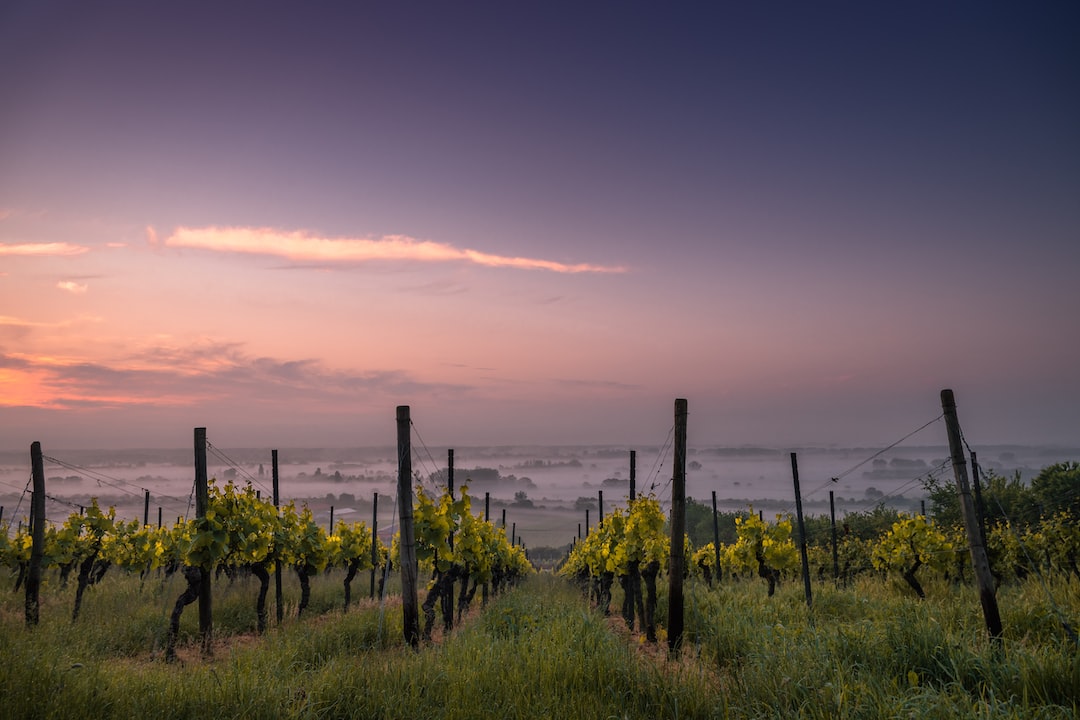
Pruning Techniques for Vineyard Success
Share
Pruning is a vital vineyard practice that significantly impacts grape quality, yield, and the overall health of the vine. It's an art that requires understanding the vine's growth cycle, recognizing the importance of balance, and applying the correct techniques to achieve the desired results. In this comprehensive guide, we'll delve into the essential pruning strategies that every viticulturist should master for vineyard success. From timing and tools to various pruning methods, we'll provide insider tips and expert guidance to help you cultivate the best possible grapes for winemaking.
Understanding the Basics of Vineyard Pruning
Pruning is not just about cutting back vines; it's about shaping the future of your vineyard. The primary goal is to control the growth and fruitfulness of the vine to ensure high-quality grape production. Pruning affects the number of grapes produced, their size, and their composition, which in turn influences the character of the wine produced.
The Importance of Timing in Pruning
Timing is everything when it comes to pruning. The dormant season, typically late winter to early spring, is the ideal time for pruning grapevines. This is when the vines are at rest, and the risk of disease transmission is lowest. Pruning too early can lead to frost damage on new growth, while pruning too late can cause the vines to bleed sap excessively, which can weaken them.
Tools of the Trade
Using the right tools is critical for effective and efficient pruning. Essential tools include sharp pruning shears, loppers, and saws, all of which should be kept clean and well-maintained to prevent the spread of disease. It's also important to wear appropriate safety gear, such as gloves and eye protection, to prevent injuries during the pruning process.
Types of Pruning Systems
There are several pruning systems used in viticulture, each suited to different vineyard conditions and grape varieties. The choice of system depends on factors such as climate, vine vigor, and the winemaker's goals.
Spur Pruning
Spur pruning involves cutting back the previous year's growth to spurs, which are short sections of one-year-old wood that have two to three buds. This system is well-suited for varieties that fruit on buds close to the base of canes, such as Cabernet Sauvignon, which is known for its popularity and distinctive character. For more on this variety, check out our article on Why Cabernet Sauvignons Are So Popular.
Cane Pruning
Cane pruning, on the other hand, involves selecting one or two canes from the previous year's growth and cutting the rest away. The chosen canes are then trained along a trellis system. This method is often used for varieties that produce fruit on wood that's one year old, and it can help promote a more even distribution of fruit along the vine.
Pruning for Vine Balance
Achieving vine balance is a key objective in pruning. A balanced vine has an optimal ratio of fruit to foliage, which is crucial for ensuring that the grapes ripen properly and develop the desired flavors and aromas.
Controlling Yield
Controlling the yield is a fundamental aspect of achieving vine balance. By limiting the number of buds during pruning, viticulturists can regulate the number of grape clusters produced, ensuring that the vine's energy is concentrated on ripening a smaller quantity of fruit to perfection.
Managing Vine Vigor
Vine vigor, or the rate at which a vine grows, also plays a significant role in vine balance. Overly vigorous vines can produce excessive foliage, which can shade the fruit and impede ripening. Pruning can help manage vine vigor by removing excess growth and promoting better air circulation and sunlight exposure.
Advanced Pruning Techniques
For those looking to refine their pruning skills further, advanced techniques can be employed to fine-tune the vineyard's performance.
Renewal Pruning
Renewal pruning is a strategy used to rejuvenate older vines or those that have become unproductive. It involves cutting the vine back to its main trunk to encourage the growth of new, healthy shoots. This practice can extend the productive life of a vineyard and improve the overall quality of the grapes.
Precision Pruning
Precision pruning takes into account the individual needs of each vine, adjusting the pruning strategy based on the vine's health, vigor, and past performance. This tailored approach can lead to more consistent grape quality across the vineyard.
Common Pruning Mistakes to Avoid
Pruning is as much about what not to do as it is about following best practices. Avoiding common mistakes can save time and prevent damage to the vines.
Over-Pruning
One of the most common mistakes is over-pruning, which can stress the vines and reduce their fruitfulness. It's important to prune with a purpose and not remove more wood than necessary to achieve the desired vine structure and yield.
Neglecting Sanitation
Another mistake is neglecting sanitation. Pruning tools should be disinfected regularly to prevent the spread of diseases. Failing to clean tools between vines can have serious consequences for vineyard health.
Pruning for Different Grape Varieties
Different grape varieties have unique pruning requirements based on their growth habits and fruiting characteristics.
Red Varieties
Red grape varieties, such as those used to make the wines described in our guide on How Red Wine is Made, may require different pruning techniques compared to white varieties. Understanding the nuances of each variety is essential for achieving optimal results.
White Varieties
White grape varieties, like those explored in our article on Exploring Dry White Wine Varieties, may have different vigor and fruiting zones that influence the choice of pruning system and the number of buds left on the vine.
Pruning as Part of a Holistic Vineyard Management Strategy
Pruning should not be viewed in isolation but as part of a holistic vineyard management strategy that includes soil care, pest management, and canopy management.
Integrating Pruning with Canopy Management
Integrating pruning with canopy management ensures that the vine's growth is directed in a way that optimizes fruit quality. This involves managing the leaves and shoots after pruning to maintain the right balance of sun exposure and air circulation.
The Role of Pruning in Pest and Disease Control
Pruning also plays a role in pest and disease control by removing diseased wood and promoting a vine structure that is less conducive to pest infestations and the spread of pathogens.
Conclusion: The Art and Science of Vineyard Pruning
Pruning is both an art and a science, requiring a blend of knowledge, skill, and intuition. By mastering the essential pruning strategies outlined in this guide, you can significantly enhance the quality and yield of your grapes, leading to the production of exceptional wines. Remember that every vineyard is unique, and the best pruning approach is one that is adapted to your specific conditions and goals. With patience and practice, you can achieve viticulture success through the thoughtful and precise application of pruning techniques.



